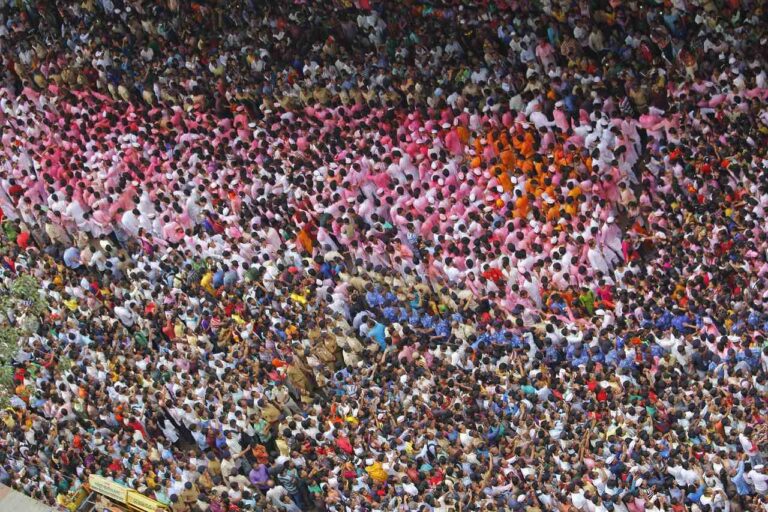Public holidays play a vital role in fostering national pride and commemorating significant historical events in a country’s history. Festive ceremonies, parades, performances, and fireworks displays mark these special occasions.
Many businesses close during these days, granting individuals a well-deserved break. They can then engage in cultural activities and spend quality time with loved ones. These cherished days significantly shape a nation’s identity regardless of their varying numbers across countries. They serve as a unifying force, bringing people together in collective celebration and gratitude.
Table of Contents
The countries with the most public holidays
The following are some of the countries with most public holidays days:
Nepal – 34 Days
Nepal takes the lead when it comes to a remarkable tally of 34 public holidays commemorated every year. Among these occasions are noteworthy memorial days such as Prajatantra Diwas, commonly known as Republic Day, and a range of religious festivities like Gaura Parva, Holi, and Buddha Jayanti.
The uniqueness of Nepal’s public holidays stems from their reliance on the lunar calendar, which aligns with the ever-changing phases of the moon.
Despite Nepal’s standard six-day work week, citizens are granted additional time off during national holidays. This generous provision not only enhances the overall quality of life for individuals but also provides ample opportunities for joyous celebrations and special moments.
Iran – 26 Days
Iran, known for its rich cultural heritage, generously grants its citizens approximately 26 public holidays each year, offering ample opportunities for celebration and reflection. The unique aspect of Iran’s holiday calendar lies in its utilization of three distinct calendars: the Solar Hijri calendar, the Gregorian calendar, and the Lunar Hijri calendar.
The Solar Hijri calendar, serving as Iran’s official and national calendar, revolves around the movements of the sun. It provides a framework for marking important events and occasions within the country.
On the other hand, the Gregorian calendar is employed for international events and Christian holidays, ensuring inclusivity and global synchronization. Lastly, the Lunar Hijri calendar holds significance for Islamic holidays, making it an integral part of Iran’s diverse cultural tapestry.
Sri Lanka – 24 Days
Sri Lanka shines with an impressive count of 24 public holidays celebrated each year, making it a vibrant haven for cultural enthusiasts. The calendar brims with diverse and significant religious festivals, including Sinhala and Tamil New Year, Diwali, and Bak Full Moon Poya Day.
Notably, the Sri Lankan government also acknowledges international events like Bank holidays, May Day, and National Day, enhancing the festive spirit throughout the year. This abundant provision of holidays places Sri Lanka at the forefront. It leads the way in granting employees the most days off worldwide.
Thailand – 23 Days
Thailand celebrates 23 public holidays annually, actively honoring its vibrant culture and rich history. The calendar includes exhilarating events like the Songkran water festival and His Majesty the Late King’s Birthday.
Beyond nationwide festivities, provinces in Thailand join in observing their own public holidays, dedicated to local festivals and historical milestones. These celebrations unite communities through spirited parades, solemn ceremonies, and joyful activities, fostering unity and recognition.
The Thai people embrace their cultural heritage, proudly showcasing their traditions and values during these significant public holidays.
Bangladesh – 22 Days
Bangladesh secures the fifth spot, with 22 public holidays joyously celebrated yearly. The country reveres an array of religious festivities, including Eid ul-Fitr, Buddha’s Birthday, and Durga Puja. Bangladesh proudly showcases its cultural diversity through a plethora of holidays and festivals that grace its calendar.
Bangladesh passionately upholds and honors a variety of cultural practices, from vibrant Islamic observances to sacred Hindu rituals, throughout the year. These celebrations unfold on a grand scale, featuring national events and local community gatherings.
The festivities are filled with bustling fairs, revered shrines, and adorned temples, creating a vibrant atmosphere. It is remarkable that special days of Christians and Buddhists, even though they make up less than 1% of the population, garner national respect from Muslims while being primarily celebrated within their respective communities.
Read also: The most widely spread religions worldwide
Myanmar and Egypt – 21 Days
Myanmar and Egypt stand neck and neck. They share the sixth position, as they generously provide their citizens with 21 annual days of respite. In Myanmar, many of these holidays revolve around religious or cultural celebrations, boasting a rich tapestry of traditions.
Notable occasions include the extravagant eight-day festivities of the Myanmar New Year, Martyr’s Day, Christmas, Deepavali, May Day, and the spirited Tazaungdaing festival.
Egypt, on the other hand, grants its citizens an exciting amalgamation of national and religious holidays, encompassing a diverse range of celebrations. Christmas Day and the Birthday of the Prophet Muhammad are just a glimpse of the numerous holidays observed in Egypt.
These occasions pay homage to the achievements and progress made since 1952, intertwining with sacred religious holy days. Due to their adherence to the lunar calendar, the precise prediction of these Islamic festivities according to the Gregorian calendar poses a challenge.
Cambodia – 20 Days
Cambodia celebrates 20 public holidays each year, with the majority falling between April and October. Some of the notable holidays include New Year’s Day, Visak Bochea Day (Buddha’s Birthday), and Cambodian Independence Day.
Cambodians unite yearly for traditional and cultural festivals from the urban sprawl to its rural expanses. Drawing on influences such as Buddhism, Hinduism, and other cultures, these colorful events bring joyous cheers of delight from all who attend. These public holidays allow Cambodians to connect with their heritage, engage in religious practices, and celebrate national pride.
How public holidays foster national pride
The countries with the most public holidays demonstrate the importance of celebrating cultural heritage, fostering a sense of national pride, and promoting social cohesion. These holidays serve as significant occasions for individuals to reflect on their history, values, and traditions.
While the number of public holidays may vary, the common thread among these countries is the recognition of the importance of collective celebrations and shared experiences.












